Please login or click here to join.
Forgot Password? Click Here to reset pasword
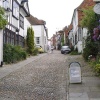 | 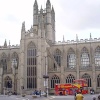 | 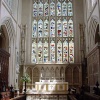 |  | 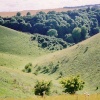 | 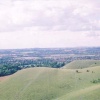 |
| Vince Hawthorn Posts: 12758 Joined: 19th Apr 2010 Location: UK | quotePosted at 23:49 on 13th December 2014 Hi John, I reckon Dave would be the one to sort you out in detail. I would use aperture priority if I wanted to have an out of focus background and would then go as wide as I could, f2.8 I think on your Lumix. If I were out taking landscapes or buildings for instance then set about f8 or a shade higher and that is usually when the lens is at it's best for sharpness. AP mode is where you choose the f stop for the conditions/subject that you are trying to get a shot of. You do not say what the probs are with your shots but if it is night shots then a tripod would be a great help or at least having the camera rest on say a wall and use the timer to cut down any movement. Not sure if that has helped but starts the discussion. |
| Rod Burkey Posts: 554 Joined: 2nd Sep 2008 Location: UK | quotePosted at 01:36 on 14th December 2014 When you select an aperture, it is wise to ensure that the resulting shutter speed is not too slow to avoid camera shake when taking hand held shots. Upping the ISO can assist. The so called "sweet aperture" on most lenses is f5.6 or f8. If your shots are turning out too dark, then I would suggest overexposing to bring out detail as in flying aircraft for example. The reverse applies of course if the subject is too bright. Auto settings are good but a bit of tweaking does go a long way to improve the resulting image. Most cameras have an under/over exposing facility. Zooming in our out should not alter the exposure, as the camera will normally adjust to the amount of light hitting the sensor, but if you notice a common problem try a manual adjustment. If you can explain the problem more, someone here on POE will assist John. Your pictures look pretty good to me by the way!
|
rustyruth Posts: 18773 Joined: 23rd Oct 2012 Location: England | quotePosted at 12:24 on 14th December 2014 I must admit I gave up with AP and went back to auto, as I was getting lousy results too  So I'll stick around to read this thread too. So I'll stick around to read this thread too. |
| Dave John Posts: 22335 Joined: 27th Feb 2011 Location: England | quotePosted at 18:01 on 14th December 2014 Hi John you say your results are dreadful!!! But in what way?? What is not right about them?? |
| Dave John Posts: 22335 Joined: 27th Feb 2011 Location: England | quotePosted at 18:55 on 14th December 2014 Hi John, this is a HUGE subject and difficult to condense so only hope you can understand some of the following Aperture priority is a semi automatic programme whereby you set the lens aperture and the camera computes the shutter speed based on your chosen f-stop combined with the ISO rating you have allocated to the sensor. Aperture and shutter speed change relative to each other. If you have chosen f4 as aperture and your camera selects 1/500 second, you then change the aperture to f11, the camera will adjust the shutter to 1/60 second to allow the same amount of light to reach the sensor. Aperture priority allows you to control the 'depth of field' in an image, ie what is reasonably sharp throughout the image. Small numbers, f1.8, 2.8, 4 tend to give a very narrow band of apparent sharp focus in front and behind the subject, prime examples being portraits where the eyes are always the focal point, leaving foregrounds and backgrounds nicely blurred. The higher numbers, f8, 11, 16 give a much wider band of apparent focus and are traditionally used for landscapes etc where sharpness is required throughout a much larger range of the image. Whatever aperture you decide on you must still focus on your chosen subject in order to get the desired result. Also tied in as Rod has indicated earlier is shutter speed. As a general rule of thumb, from the 35mm film days, now known as full frame in digital, is that the shutter speed should be at least the reciprocal of the focal length of the lens. So 50mm lens 1/60th, 135 mm 1/150-1/200 and so on. But with the crop sensor cameras around now you are probably better working on 2 times the focal length you have. If you are having trouble with matching a suitable shutter speed to your chosen aperture, again as Rod has indicated, look at raising the ISO setting This will tie in very much with night shots as obviously the shutter needs to be open a lot longer. Depending on the available light you could be looking at exposure times of several seconds for which durations no one can hold a camera still for that long!! Night shots should be taken on a tripod. The zoom does have an effect on the aperture. Take for example a lens with a zoom range of 17-70mm and an aperture range of f2.8 to f5.6, the wider aperture f2.8 can be used at the widest setting 17mm but as you extend the zoom out to the longer 70mm maximum setting so the aperture will adjust towards the f5.6 setting.. You should be able to see this in the viewfinder display as you extend the zoom. This again can have an effect on shutter speeds and ISO Hopefully someone can jump in and help also |
| Dave John Posts: 22335 Joined: 27th Feb 2011 Location: England | quotePosted at 20:46 on 14th December 2014 No problem John, we all have things to do mate Noise is usually related to high ISO value, 800+?? depending on sensor size and age of camera. |
rustyruth Posts: 18773 Joined: 23rd Oct 2012 Location: England | quotePosted at 20:51 on 14th December 2014 Thanks Dave, your explanation has helped me too  |
| Dave John Posts: 22335 Joined: 27th Feb 2011 Location: England | quotePosted at 20:57 on 14th December 2014 It is a very big and complicated subject but I reckon Rod and Edward may well come up with some more info. To FULLY understand the aperture / shutter relationship you need to use a camera in FULL manual mode whereby you set both aperture and shutter. But the AUTO and PROGRAMME settings on cameras nowadays have so much technology behind them they do tend to give reasonable results direct from camera. But here we are delving into another subject altogether ... what is a perfect image ???? Does it even exist ??? |
| Edward Lever Posts: 734 Joined: 22nd Dec 2005 Location: UK | quotePosted at 00:09 on 15th December 2014 Personally, I use Aperture Priority about 95% of the time, since it is the mode which allows me a good degree of control without too much thinking. However, it requires some experience to get it right. The fact that digital cameras allow you to ring the changes on ISO setting makes it easier than in the days of film, when the ISO setting was fixed by which film cassette you had loaded that day. The rest of my shots are either in Manual Mode or Shutter Priority, which I use for action shots. The same old rules apply though: choosing an aperture and ISO setting for the prevailing lighting conditions which gives a fast enough shutter speed to avoid camera shake, and making adjustments as necessary for meter readings. This latter point is probably the hardest to get right. The 'highlight alert' on most digital cameras is invaluable in assessing metering, and I always check for blown highlights. The best way to learn is to take pictures in different conditions and critically review the results. There are other things which are best not left to AUTO, for example White Balance. If I am in a hurry I will leave it on AUTO, but if time permits it is best set manually. |
| Rod Burkey Posts: 554 Joined: 2nd Sep 2008 Location: UK | quotePosted at 16:41 on 15th December 2014 One could always try shutter priority if aperture priority causes problematic images. This enables easier capture of fast moving subjects, as you can, for example select a high speed and the aperture is automatically selected. This mode will help avoid camera shake. I use aperture priority a lot but I also deliberately under or overexpose almost all the time, especially when I don't have to grab a shot or in one of my "bull in a china shop moods". The fact is that when a lens is pointed and focussed, the subject is seldom made up of mid tones which makes some adjustment needed. I almost never use “Auto”, probably because my film cameras did not have it and I learned about speeds and apertures by practice, sometimes even using a hand held light meter. I know, I sound like an old guy….. |